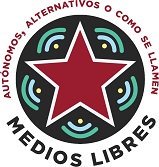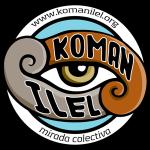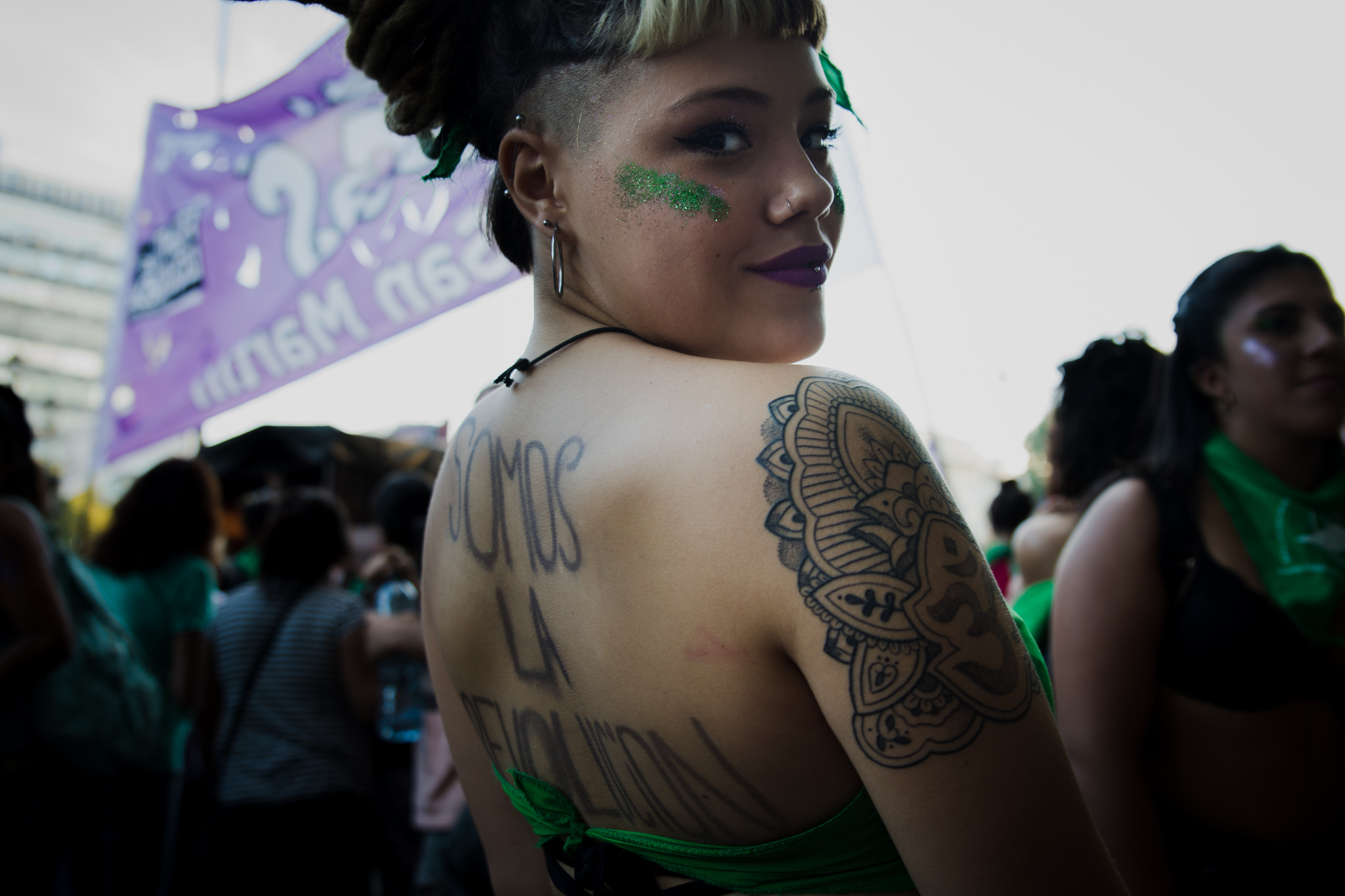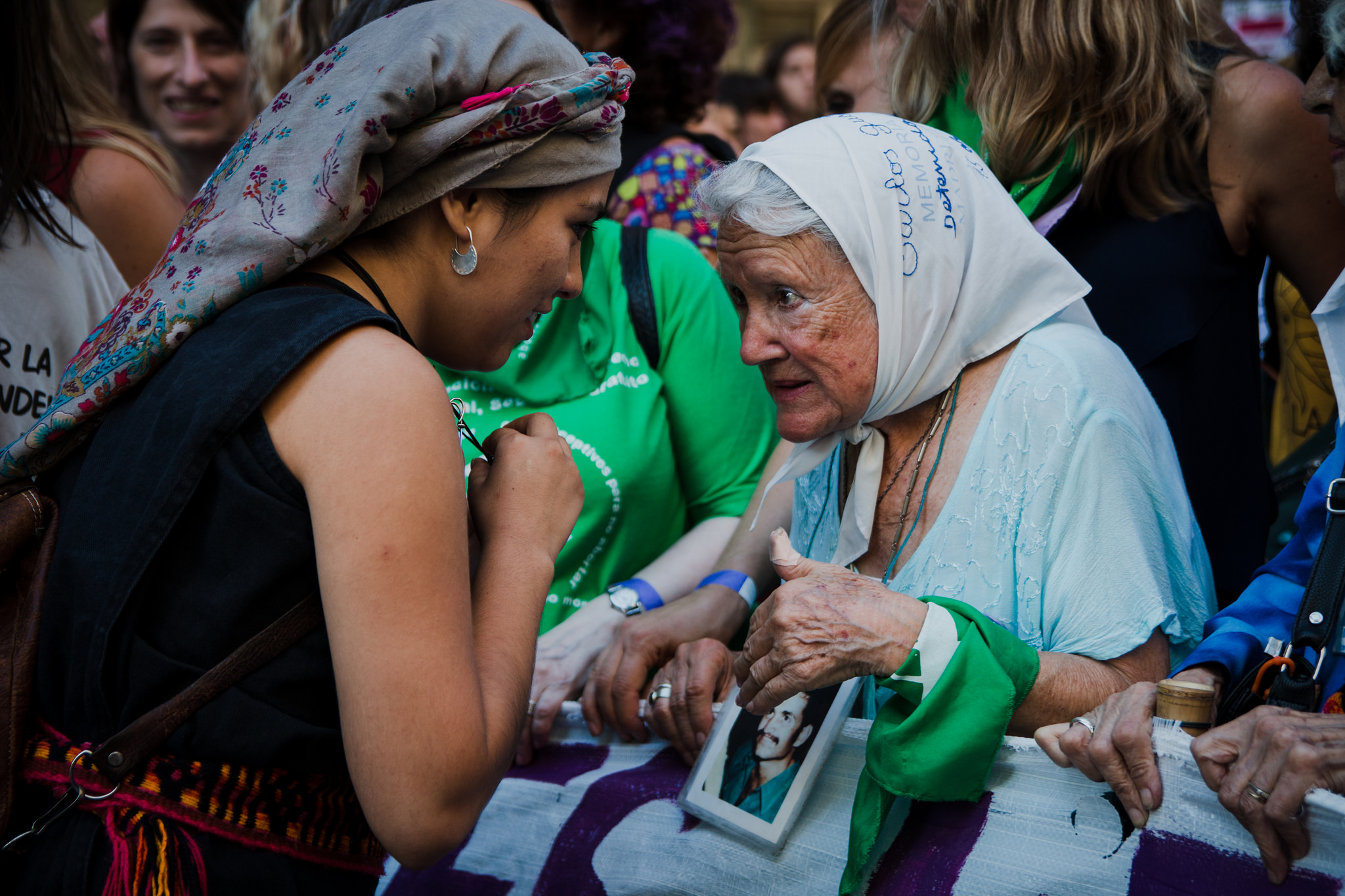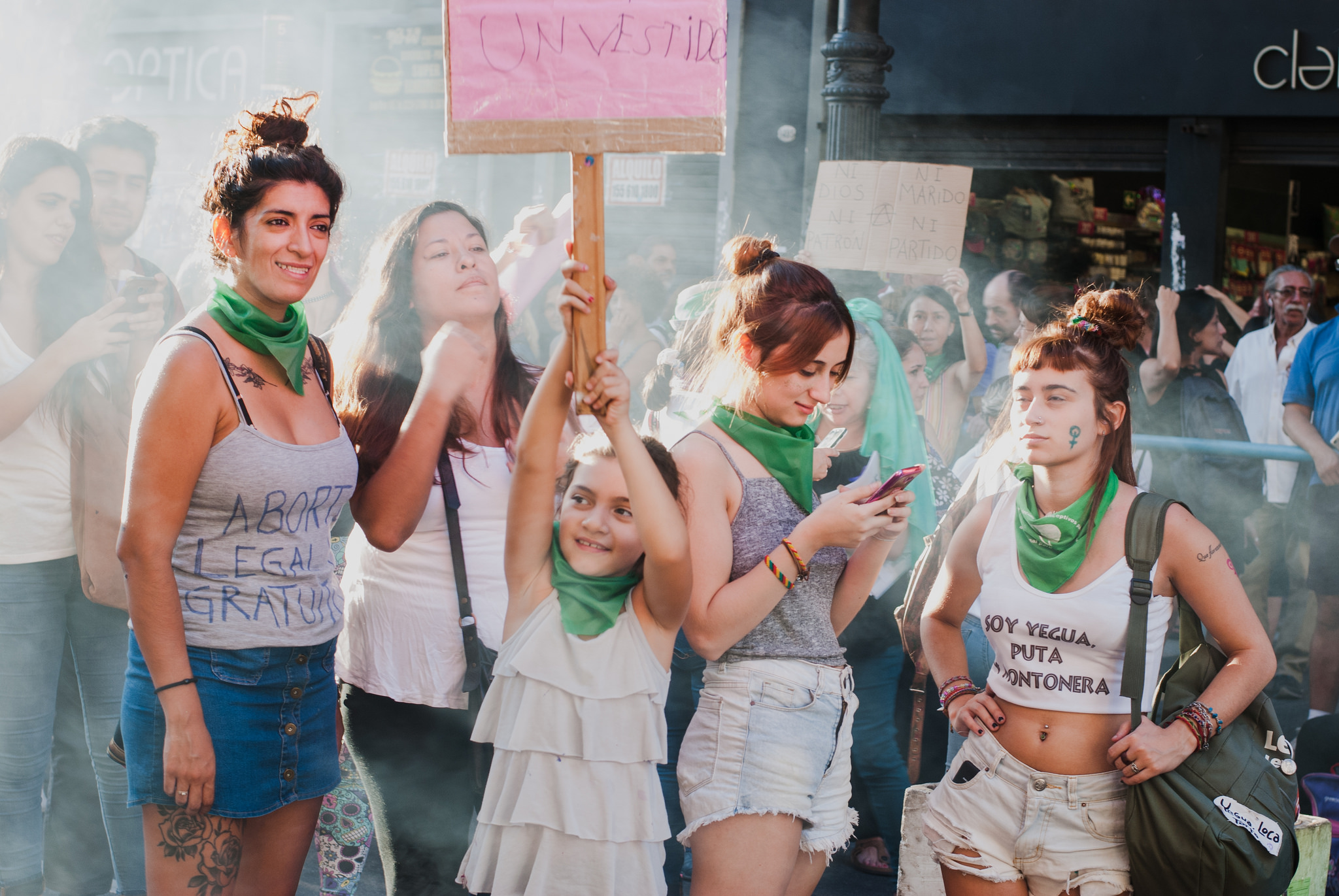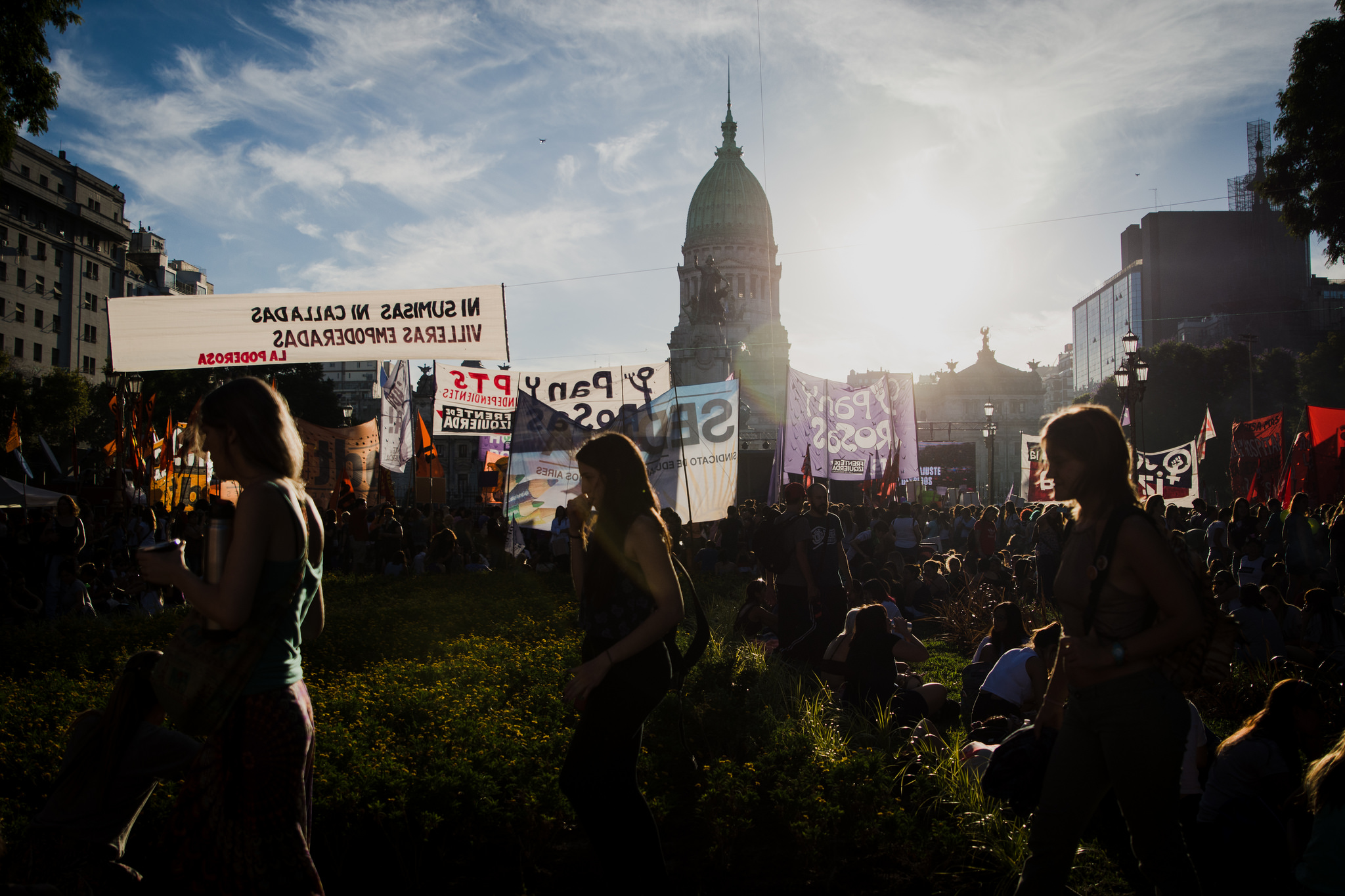
Author
Convocation for the Next Step in our Struggle
Convocation for the Next Step in our Struggle
Sisters and brothers, compañeras and compañeros of the countryside and the city, in Mexico and around the world:
The National Indigenous Congress (CNI), the Indigenous Governing Council (CIG), the Civil Association “The Time for the Flourishing of Our Peoples Has Come,” and the Zapatista Army for National Liberation here address those individuals, groups, collectives, organizations, peoples, barrios, tribes, and nations that, in Mexico and in other countries, took on as their own the initiative to register the CIG spokeswoman, María de Jesús Patricio Martínez, as candidate for the Mexican presidency.
The information that we have been able to verify is the following:
- Signatures received by the National Electoral Institute (INE): 281,955. Of these, 10,624 were registered on paper, rather than via the digital application. Of those paper registrations, the vast majority came from community assemblies.
- According to the INE’s own criteria, 94.5% of the signatures collected were found to be valid.
- Auxiliaries: 14,117 people registered as auxiliaries, with 5,704 actively registering signatures. With respect to the difference between registered and active auxiliaries (8,413), of 5,322 emails that were sent to those who registered as auxiliaries but did not document any signatures, there were 2,137 replies. Of those replies, 1,618 explained that they did not have an adequate mobile device with which to gather signatures, either because of the requirements of the INE application or because of the quality of the camera on their device.
- Average number of signatures per active auxiliary: 49.43 (information from the webpage of our brothers and sisters at Cryptopozol, who processed this information from November 3, 2017, through February 24-26, 2018. See: https://criptopozol.github.io/avance_marichuy/
- The following is an approximate (but not precise) count of auxiliaries by state:
Location not listed 4930
Aguascalientes 89
Baja California 251
Baja California Sur 69
Campeche 42
Chiapas 864
Chihuahua 188
Mexico City 3398
Coahuila 92
Colima 30
Durango 42
Mexico State 1070
Outside Mexico 105
Guanajuato 345
Guerrero 99
Hidalgo 179
Jalisco 1040
Michoacán 264
Morelos 274
Nayarit 63
Nuevo León 257
Oaxaca 242
Puebla 407
Querétaro 301
Quintana Roo 189
San Luis Potosí 197
Sinaloa 98
Sonora 149
Tabasco 48
Tamaulipas 69
Tlaxcala 94
Veracruz 367
Yucatán 151
Zacatecas 89
(Note: the final count does not match the registered auxiliaries because, we are told, some auxiliaries registered more than once out of desperation because the INE did not respond in a timely manner).
-*-
Compañeras and compañeros, sisters and brothers:
As is evident, we did not reach the necessary number of signatures to register Marichuy as a presidential candidate.
We think explanations for and evaluations of this fact should stem from a serious and rigorous analysis.
Had we reached the number of signatures necessary we would have been able to take advantage of this space to continue to reveal the suffering and struggle of the originary peoples and to point to the criminal character of the system, as well as to echo the pain and rage that seethes across the entire national territory and to continue to promote self-organization, resistance, and rebellion.
We did not reach that goal, but we must continue on our path, seeking out other ways, methods and forms with ingenuity, creativity, and boldness to achieve what it is that we want.
Our purpose was never to take Power, but was and will be for self-organization, autonomy, rebellion and resistance, for solidarity and mutual aid and for the construction of a world built on democracy, freedom, and justice for all.
The National Indigenous Congress’ initiative to form the Indigenous Governing Council and run its spokeswoman, Marichuy, as candidate for the Mexican presidency has completed another stage. The first stage was marked by the decision made during the Fifth National Indigenous Congress on our twentieth anniversary in October of 2016 to hold a referendum on this initiative among all of our peoples and communities. The second stage consisted of the CNI’s internal referendum from October through December of 2016 on whether to form the CIG and name its spokeswoman. The third stage culminated in the Constitutive Assembly of the CIG and the naming of María de Jesús Patricio Martínez, by consensus of that Assembly, in May of 2017. The fourth stage consisted of the collection of signatures for Marichuy’s presidential bid, a process that we have just concluded.
Our path continues. The fundamental difference between the current moment and the previous stages is that there are now many more originary peoples walking together with us, and, MOST IMPORTANTLY, that there are many more people, groups, collectives, and organizations focused on finding our own solutions, solutions that we know will never come from above.
This last stage was marked by the involvement of many more people and sectors, beyond the originary peoples and the CNI, in a civil, peaceful, and inclusive struggle for a just cause using legal, legitimate, and honest methods toward a horizon of the radical transformation of the reality we all suffer today. This is something that no member of the institutional political class can say.
Faced with the undeniable fact that we did not reach the number of signatures required by law to continue this stage, we call for an analysis and evaluation that, like the entire process so far, is collective, participative, inclusive, honest, and true.
For these reasons, and for others for which we have no words:
First: We thank with all our hearts the people who, in Mexico and in other countries, gave their signatures. For us, each of them is an embrace and encouragement to continue on without fail. We salute each and every one of them and, in response, reaffirm our commitment to not falter on this path.
Second: We offer special thanks to those who, with or without the label of “auxiliaries,” understood the reach of our initiative and made it their own, offering their time, resources and labor in the process of creating, growing, and consolidating collective and communitarian organization in order to be able to confront in better conditions the storm that we are all living through.
Third: The Civil Association “The Time for the Flourishing of Our Peoples Has Come,” the National Indigenous Congress and all who constitute it, the Indigenous Governing Council, and the Zapatista Army for National Liberation have begun a serious internal analysis and evaluation of the stage which has just concluded.
Fourth: We think this analysis is not just up to us. We believe that, given the collective effort put into this initiative which far surpassed the horizon of the originary peoples, we want to consolidate and maintain this broader desire to build another way of doing politics.
Thus, we convoke:
All those individuals, groups, collectives, organizations, nations, tribes, peoples, and communities of the countryside and the city, indigenous and non-indigenous, in Mexico and in other countries, who committed themselves to this process and took it on with work, dedication, and honesty: we invite you carry out an analysis and evaluation of this effort using the objectives announced by the CNI and the CIG and above all, the objectives you yourselves established, and to send it to us at the following email:
valoraciones@congresonacionalindigena.org
We would also like to announce that, parallel to these analyses and evaluations, the Civil Association “The Time for the Flourishing of Our Peoples Has Come,” the National Indigenous Congress, the CIG, and our Zapatista brothers and sisters will convoke a series of public activities open to all those who participated in the process in order to follow through with this struggle that, as we know, has only just begun. These activities will be announced by the convoking bodies.
We also invite you to hold your own activities for analysis and evaluation of what is happening in Mexico and around the world according to your own ways, times, and criteria. As the CIG and its spokeswoman Marichuy have said time and again, the horizon of our struggle is not marked by July 1, 2018, nor does it apply only to Mexico.
Resistance, rebellion, and the endeavor to build a world where many worlds fit is an international one and is not limited by the calendars or geographies of those above who exploit, disrespect, rob, and destroy us.
Mexico, March 2018.
NEVER AGAIN A MEXICO WITHOUT US
NEVER AGAIN A WORLD OF DEATH AND DESTRUCTION
NATIONAL INDIGENOUS CONGRESS
INDIGENOUS GOVERNING COUNCIL
CIVIL ASSOCIATION “THE TIME FOR THE FLOURISHING OF OUR PEOPLES HAS COME”
ZAPATISTA ARMY FOR NATIONAL LIBERATION
(Español) Una constelación de luchas en tierras zapatistas
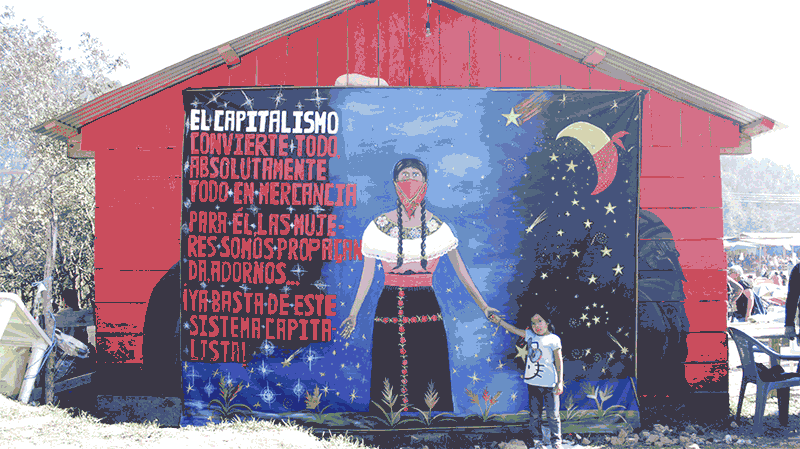
Una constelación de luchas en tierras zapatistas
Crónica y reflexiones tras el “Primer Encuentro Internacional, Político, Artístico, Deportivo y Cultural de Mujeres que luchan”.
(…) tal vez, cuando ya acabe el encuentro, cuando regresen a sus mundos, a sus tiempos, a sus modos, alguien les pregunte si sacaron algún acuerdo. Porque eran muchos pensamientos diferentes los que llegaron en estas tierras zapatistas. Tal vez entonces ustedes responden que no. O tal vez responden que sí, que sí hicimos un acuerdo. Y tal vez, cuando les pregunten cuál fue el acuerdo, ustedes digan acordamos vivir, y como para nosotras vivir es luchar, pues acordamos luchar cada quien según su modo, su lugar y su tiempo.
(Discurso de apertura. Compañera Érika)
Cobertura colaborativa realizada por Radio Zapatista, Subversiones y La Tinta
Caracol IV, Torbellino de Nuestras Palabras. Morelia, Chiapas. Allí donde las estrellas brillan más, allí donde el territorio es más libre, allí donde las mujeres zapatistas abrieron su casa para recibir a miles de mujeres de todas partes del mundo. Algunas tardamos horas en llegar, otras días. Muchas conocíamos la historia del zapatismo y la rebeldía de sus mujeres, algunas sabíamos de la importancia de la Ley Revolucionaria de Mujeres para las comunidades indígenas y otras apenas habíamos escuchado hablar de un Ejército Zapatista de Liberación Nacional en el sureste mexicano.
Mientras el Paro Internacional de Mujeres hacía que miles de compañeras alrededor del mundo suspendieran sus tareas y salieran a marchar por las calles de sus ciudades, otras miles asistíamos al llamado de las zapatistas. Llegar no fue fácil. Muchas no pudieron estar. Todas convocadas por una misma consigna: ser mujeres que luchamos.
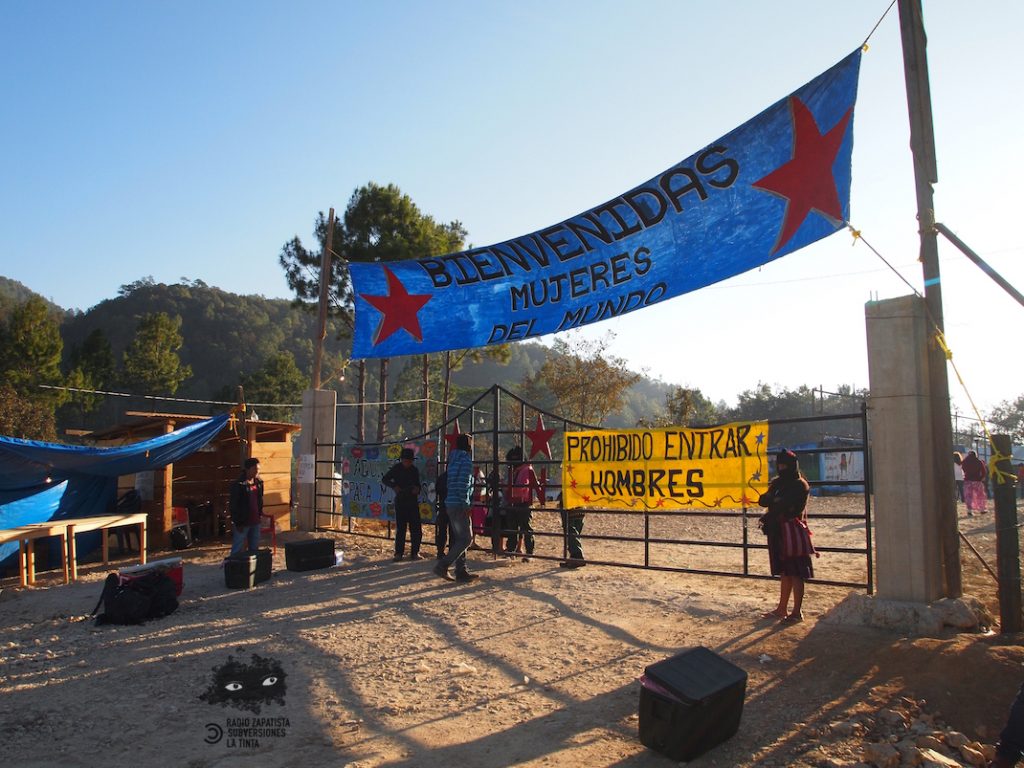
Fueron tres días, del 8 al 10 de marzo, en que nos regalamos alegrías, miradas, palabras, bailes, poesías, pinturas y “cosas raras”, dirían las mujeres zapatistas. Un fragmento de tiempo nos condensó en una misma latitud. Cada una con sus sentires y sus luchas viajó hasta allí y entregó sus dolores, sus sonrisas, su fuerza de ser mujer en cánticos y consignas que retumbaban en los corazones de quienes estábamos. Y se replicaban por el bosque que nos rodeaba hasta insospechados rincones del planeta. Tuvimos una certeza: desde distintas latitudes, todas juntas esos días, hicimos temblar el mundo.

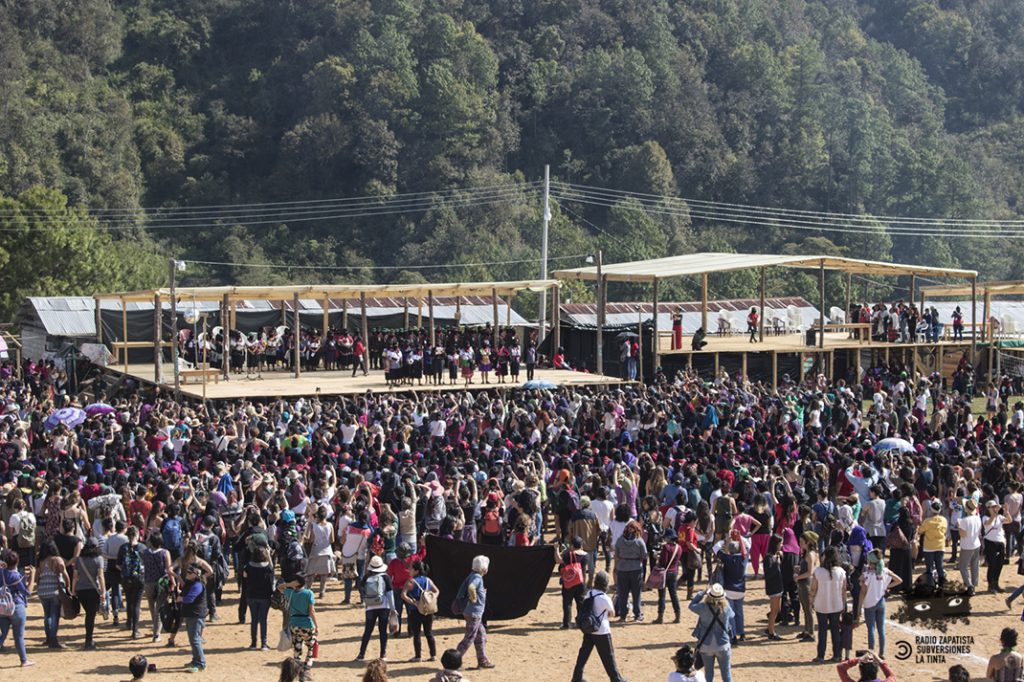
Las zapatistas eligieron el Día Internacional de la Mujer que lucha para inaugurar el Primer Encuentro Internacional, Político, Artístico, Deportivo y Cultural de Mujeres que Luchan, en “17 de Noviembre”, uno de los tres Municipios Autónomos Rebeldes Zapatistas del Caracol IV “Torbellino de Nuestras Palabras” de la localidad de Morelia (que coexiste con la demarcación oficial correspondiente a Altamirano) y sede de la Junta de Buen Gobierno “Corazón del Arcoíris de la Esperanza”. Región a la que también denominan “zona Tzotz-Choj” (murciélago-jaguar), en referencia a un antiguo gobernante de la ciudad de Toniná y en la que continúan habitando los pueblos mayas tseltal, tsotsil y tojolabal.
Esta región, al igual que muchas otras de Chiapas y de México, ha sido y es escenario de luchas campesinas y por la defensa de los territorios. En el caso zapatista trascendió la creación de un gobierno propio y la construcción de la autonomía por la vía de los hechos en la que la participación de las mujeres sigue siendo crucial.
El lugar en donde se realizó este encuentro internacional, uno de los más grandes hasta ahora, fue parte de una finca ganadera tomada por bases zapatistas. Este municipio autónomo fue escenario de una de las mayores tomas de tierras tras el levantamiento armado en 1994.
Actualmente, y como pudimos observar tanto en el viaje de ida como de vuelta, el paso de camiones cargados de madera es constante. Los grandes aserraderos en manos de grupos de poder local del Partido Verde Ecologista son una de las tantas expresiones del saqueo y despojo de bienes comunes naturales en ésta y otras regiones; son parte de los megaproyectos de infraestructura y desarrollo de los grandes capitales nacionales e internacionales.
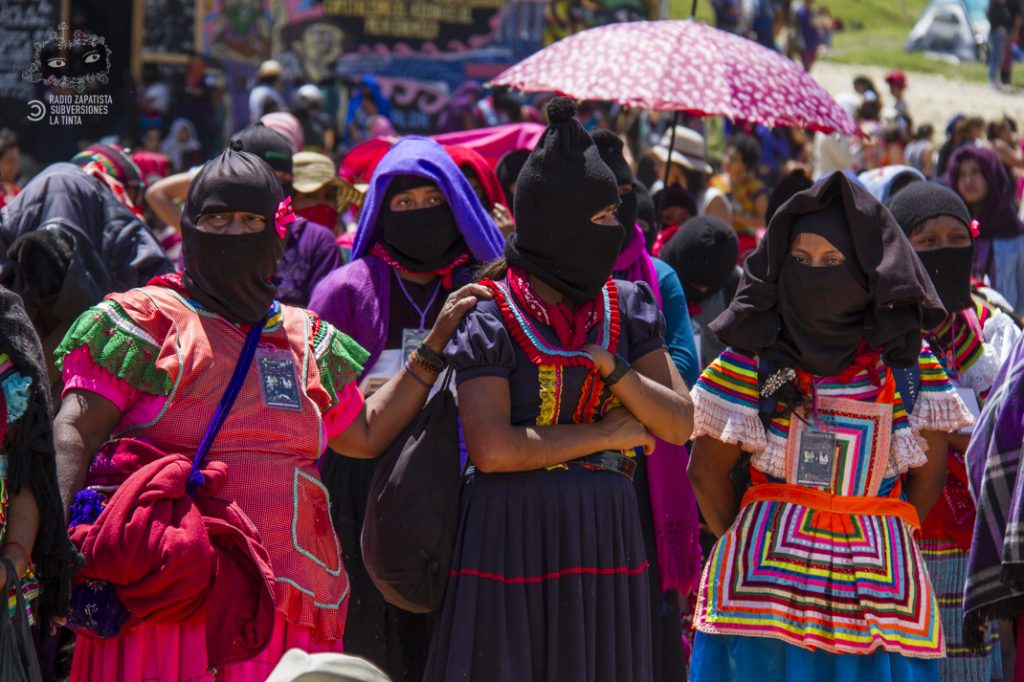
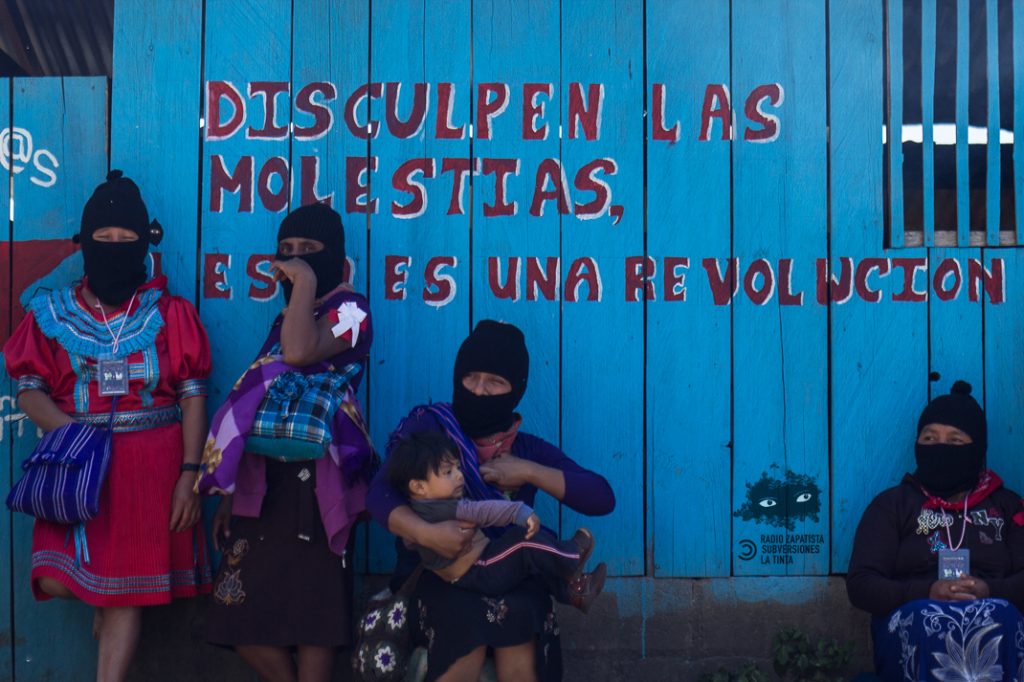
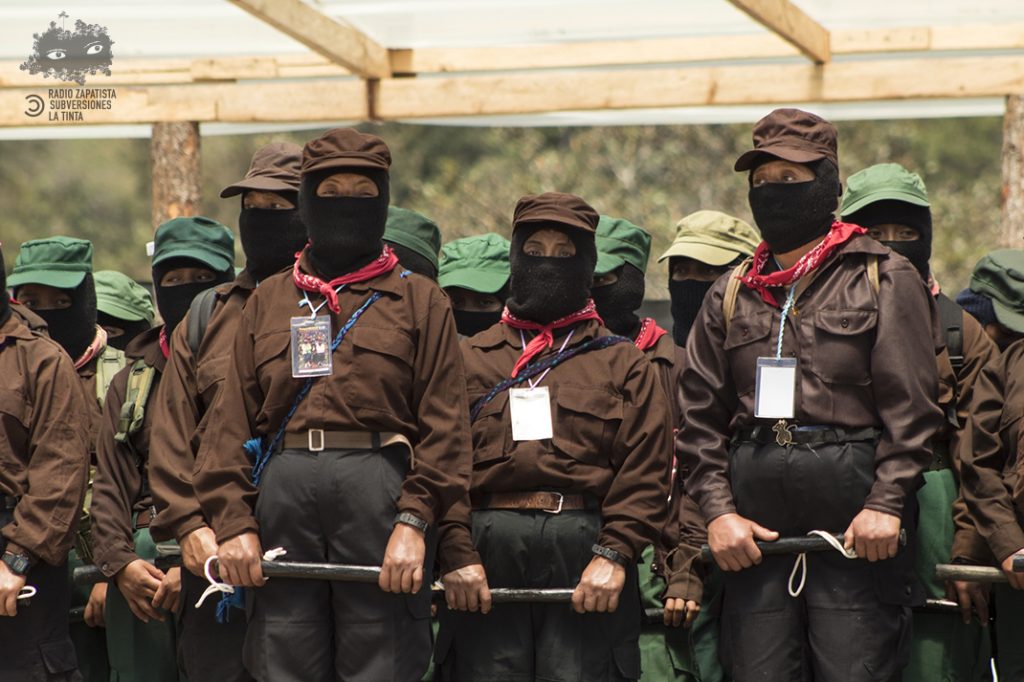
¿Será que salió un poco bien?
(…) que dónde duermen, que dónde comen, que dónde se bañan, que dónde van al baño, que el sonido, que la luz, que el agua, que si se enferman, que qué les vamos a decir, que cómo les hablamos, que cómo las escuchamos y miramos.
(Discurso de clausura. Compañera Alejandra)
Las preguntas que se hicieron las compañeras zapatistas durante los meses que tardaron en organizar el encuentro, las tuvieron desveladas y sin hambre durante mucho tiempo, según nos contaron. Organizadas desde abajo y a la izquierda, buscando el acuerdo de las zapatistas de cada una de las comunidades: no fue una tarea fácil, pero lo lograron. Ante esto, las consignas “gracias” y “vivan las zapatistas” fueron de las más coreadas en las cientos de actividades que se realizaron. Gracias a las zapatistas por recibirnos en su territorio. Gracias por procurarnos comida para tres días a más de cinco mil mujeres. Gracias por proveernos agua para beber, para ir al baño, para darnos una ducha. Gracias por las palabras, cada una de las que nos dijeron y cada una de las que escucharon de nuestros decires. Y sobre todo, gracias por esas miradas en las que nos reconocimos a través de paliacates y pasamontañas, rímeles y lentes, pañuelos y sombreros cubriéndonos del sol.
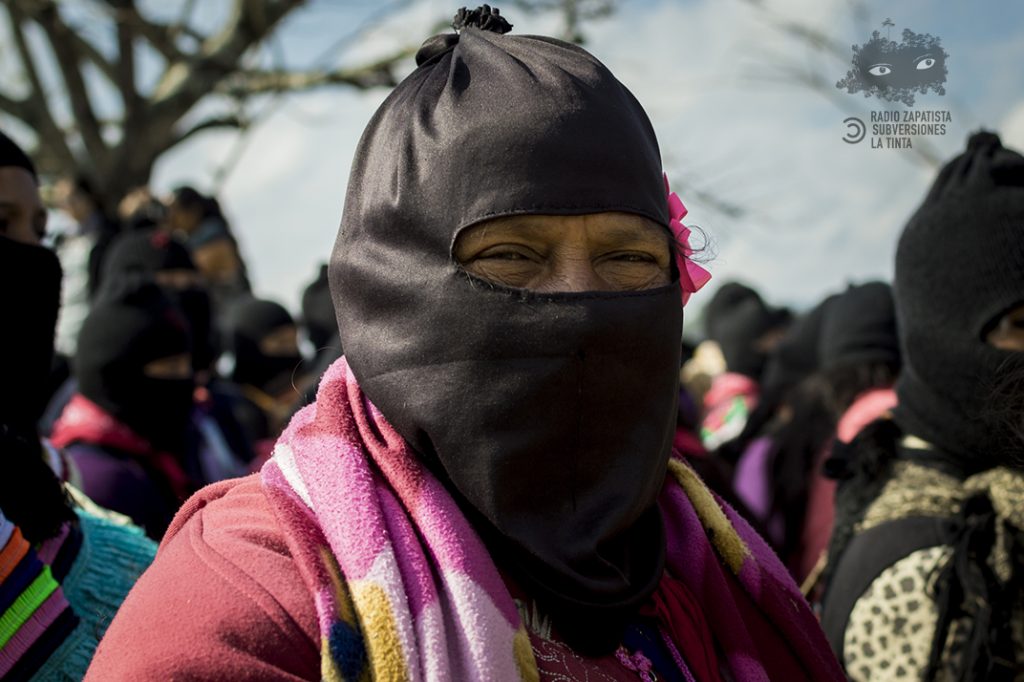
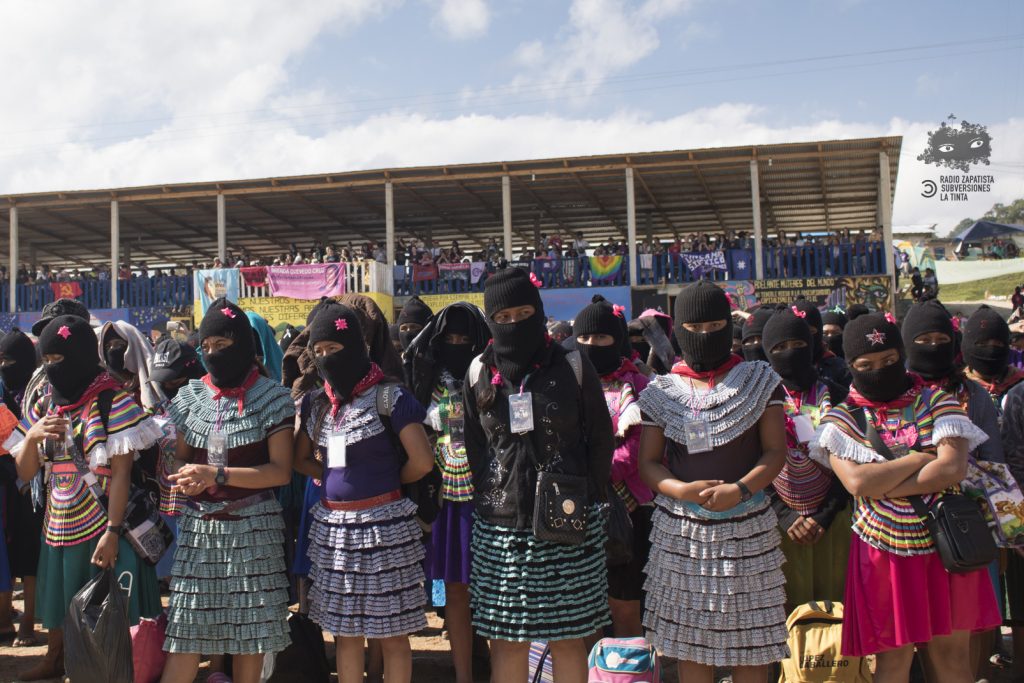
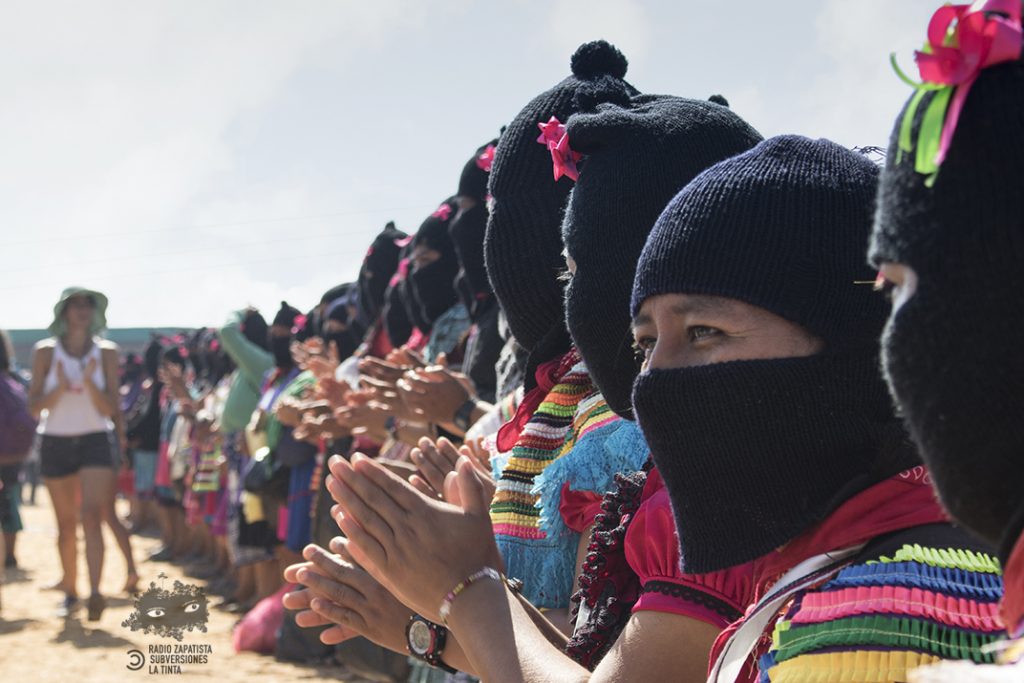
Carolina y Marina son mujeres zapatistas que llegaron desde el Caracol III La Garrucha. Su rol fue el de coordinación en la organización de este evento junto con otras 60 compañeras provenientes de los otros caracoles zapatistas. En una entrevista que les realizamos, nos contaron que se sentían orgullosas, al igual que sus compañeras, de haber podido organizar este Encuentro sin antecedentes en la historia del zapatismo: “es el primero que es sólo para mujeres, se han hecho otros, pero nunca como éste que no se permiten entrar hombres porque este encuentro lo organizan sólo mujeres”.
Nos contaron también que el evento está en marcha desde el mes de julio de 2017, cuando se propusieron realizarlo: “entonces tuvimos muchas reuniones para planearlo. Nos costó trabajo hacerlo, porque nunca habíamos hecho, sí con la ayuda de los hombres, pero en este caso somos puras mujeres quienes organizamos y quienes vimos cómo le hacemos para recibirlas a ustedes”.
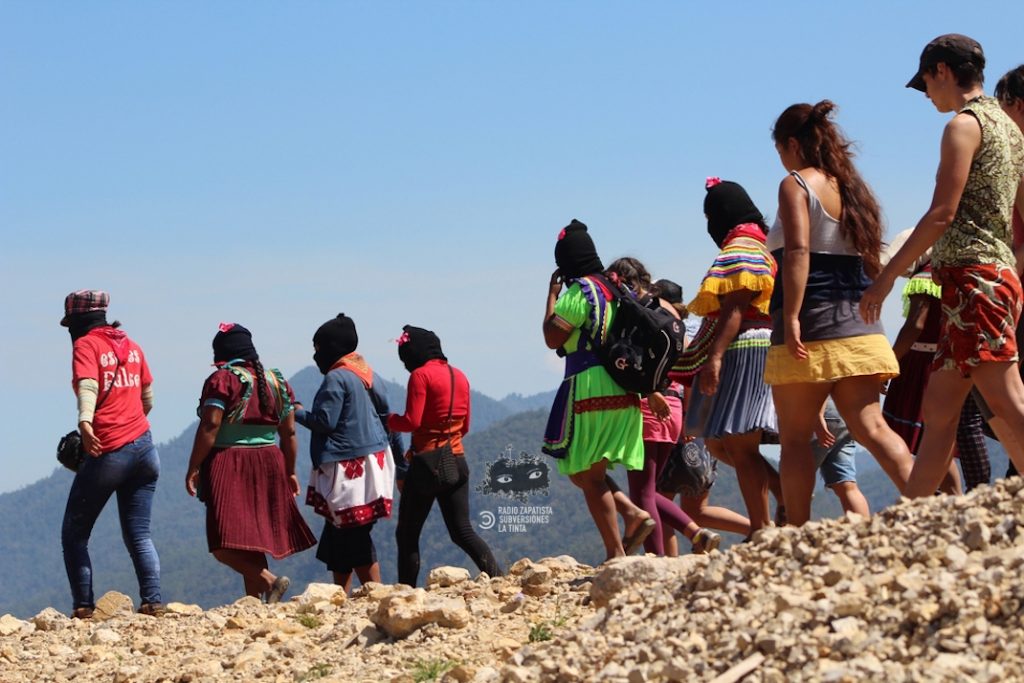
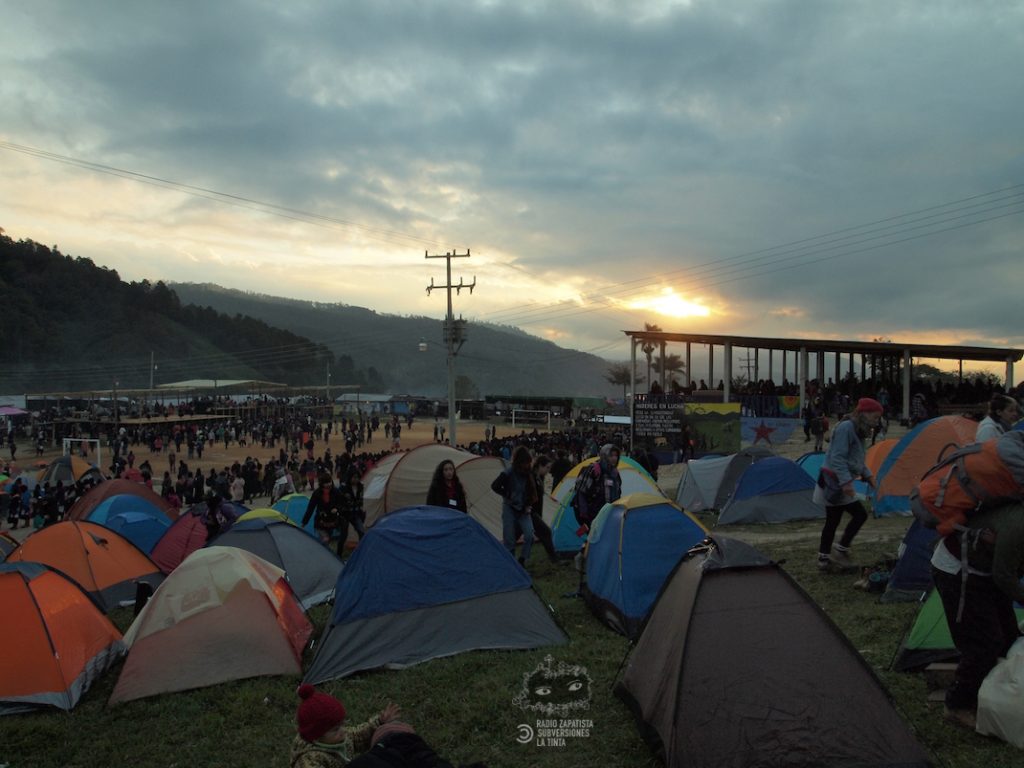
Después de la primera reunión en julio, las delegadas llevaron la propuesta de realizar el Encuentro a sus comunidades, donde fueron sólo las mujeres (y cada una de ellas) las que decidieron convocarnos: “se fue hasta los pueblos donde están las compañeras zapatistas. A cada pueblo a preguntar si es que va a haber este encuentro. Entonces dijeron que sí y fue ahí donde se empezó a planear todo —nos cuentan Carolina y Marina— para organizar este evento que hoy fue muy difícil para nosotras. Nunca antes lo habíamos hecho. Nos costó mucho trabajo porque empezamos a ver que se necesitan muchas cosas y entonces nos tuvimos que preparar para poder hacerlo”.
No sólo las coordinadoras tuvieron tareas antes y durante el Encuentro. Cada una de las mujeres zapatistas que asistió participó activamente de alguna manera en los diferentes trabajos. Así, las insurgentas y milicianas fueron las encargadas de cuidar el lugar para que no ingresaran los hombres. Otras compañeras se ocuparon de la higiene del lugar, otras de conducir los camiones que entraban y salían del predio del Encuentro, ya sea con alimento, o bien, con basura. También hubo médicas y promotoras de salud. Las Tercias Compas ocuparon roles técnicos en el sonido y la luz, también estuvieron encargadas de la comunicación y el registro completo del evento.
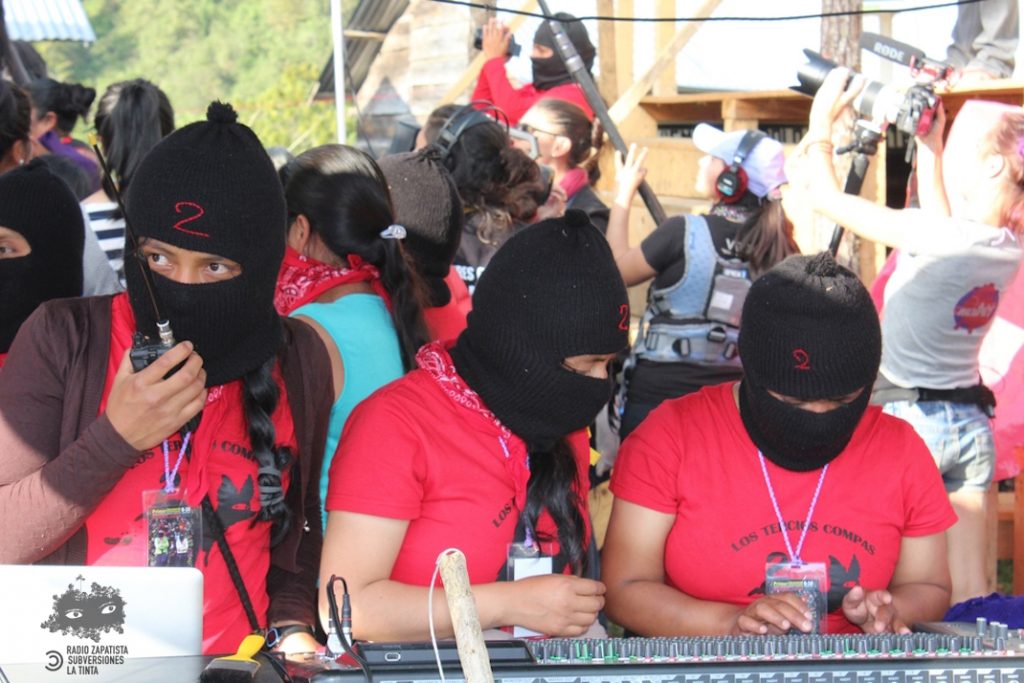
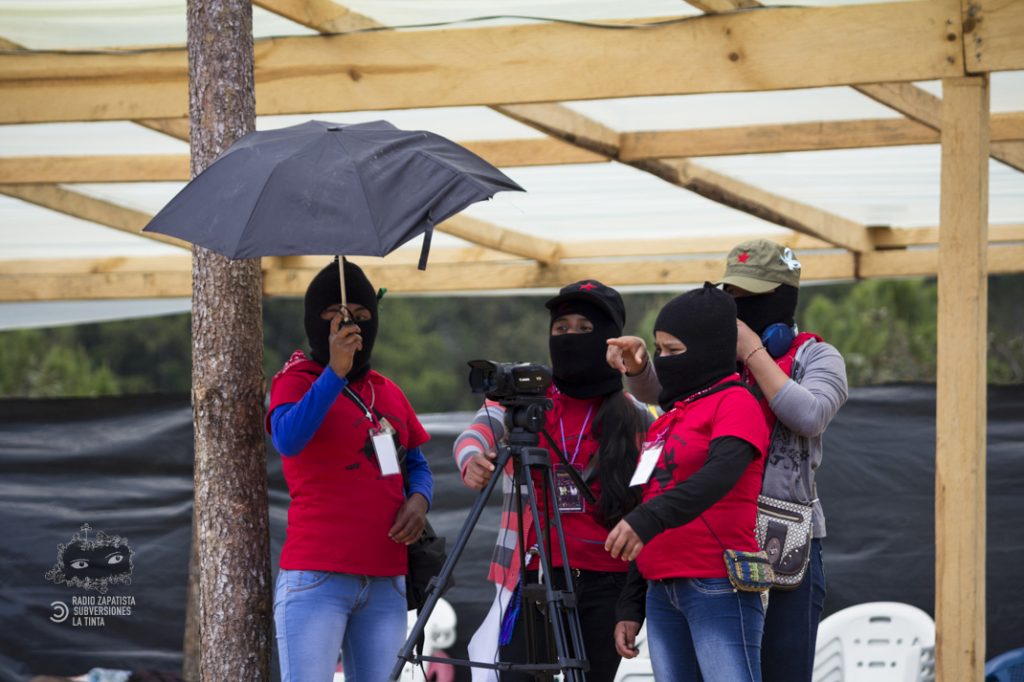
El 8 de marzo las zapatistas presentaron sus participaciones, mientras que los días 9 y 10 se realizaron las actividades de las mujeres que veníamos de distintas partes del mundo. Más de dos mil compañeras bases de apoyo zapatistas estuvieron presentes en cada una de las actividades. Al respecto, Carolina y Marina nos explican el trabajo de las bases de apoyo: “verlas a ustedes y también estar en cada actividad que ustedes hacen para que vayan a los pueblos para explicarles qué son las cosas que vieron de ustedes, qué fue lo que presentaron. Porque así somos nosotras, tomamos en cuenta todo lo que vemos y tiene que llegar hasta los pueblos”.
Muchas mujeres zapatistas pusieron el cuerpo en este encuentro durante meses y eso se notó en la gran organización que hubo: cinco comedores, decenas de talleres, conversatorios y proyecciones, partidos de fútbol, voleibol y basquetbol. Cada actividad era multitudinaria y ocurría de manera simultánea con otras: mientras algunas formaban parte de un ritual de sanación alrededor del fuego, otras compañeras miraban una obra de teatro, conversaban sobre las violencias en nuestros cuerpos y nuestros territorios o participaba de un mural colectivo.
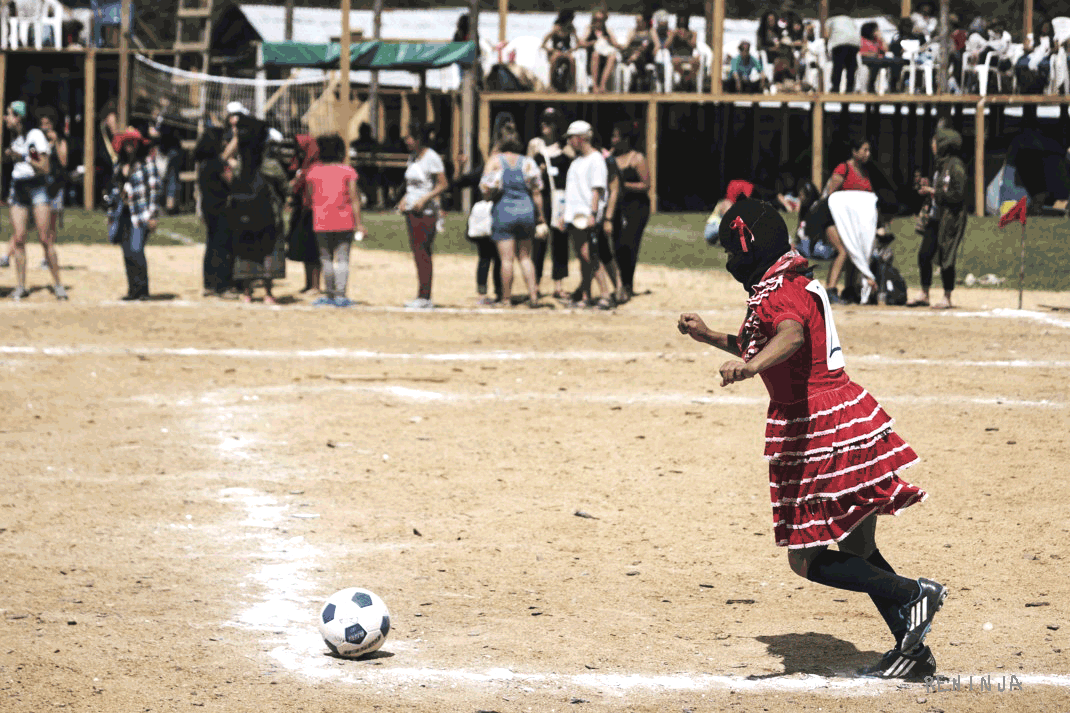
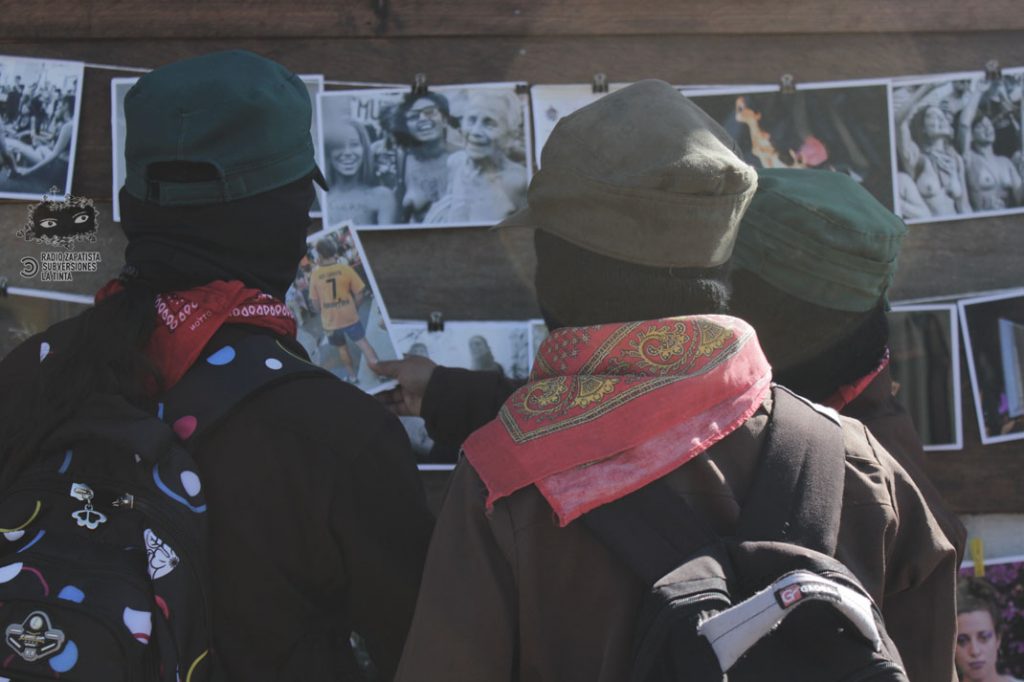
Un campamento enorme, dos habitaciones y diversos espacios habitables abrigaron a miles de mujeres del frío húmedo de la noche moreliana. Las compañeras zapatistas contaron con el apoyo de un equipo de mujeres encargadas de responder los correos, realizar los registros, organizar el transporte, los horarios y las actividades previas al encuentro y durante el mismo. En las palabras de clausura, agradecieron su apoyo, así como también el de los compañeros que se quedaron en las comunidades cuidando a las familias, a los animales, las casas, los cuarteles, los campos, pendientes de que “los malos gobiernos” no hicieran nada contra el Encuentro.
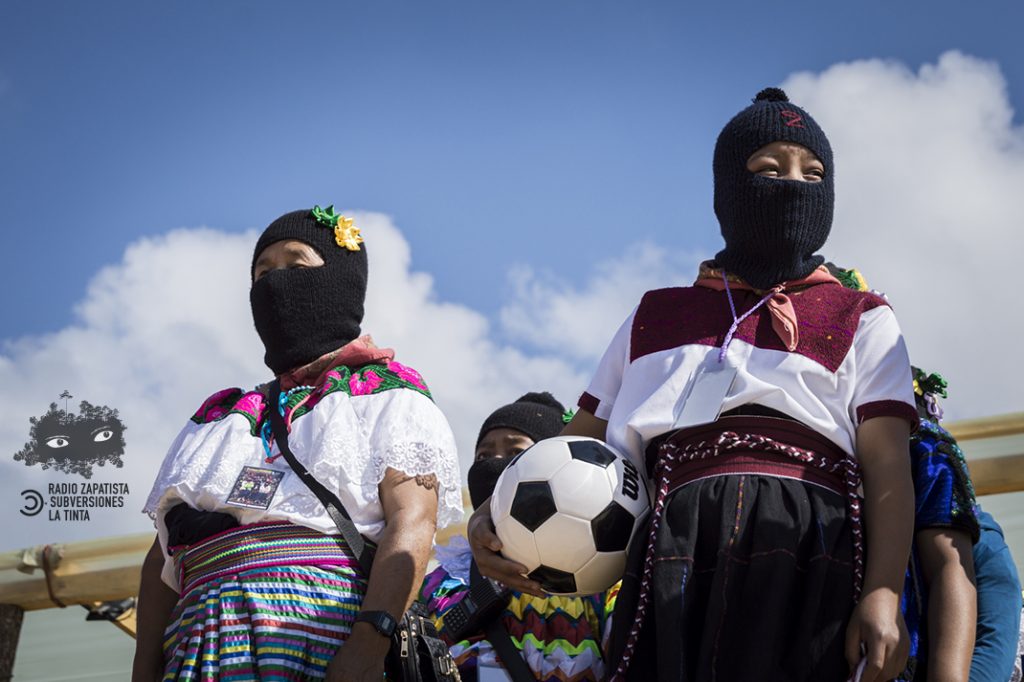
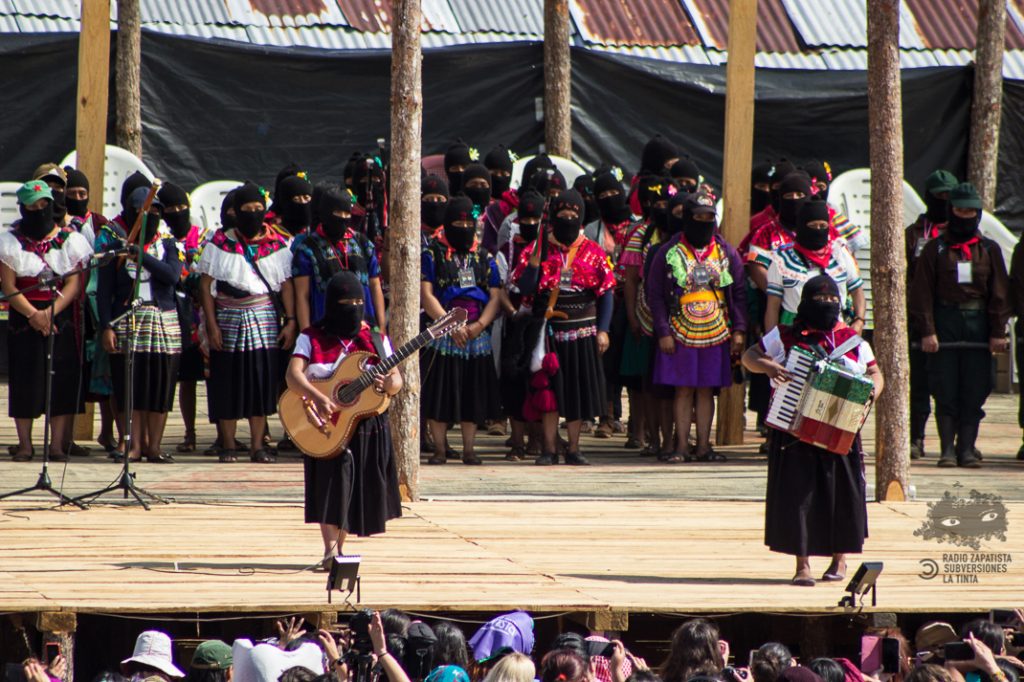
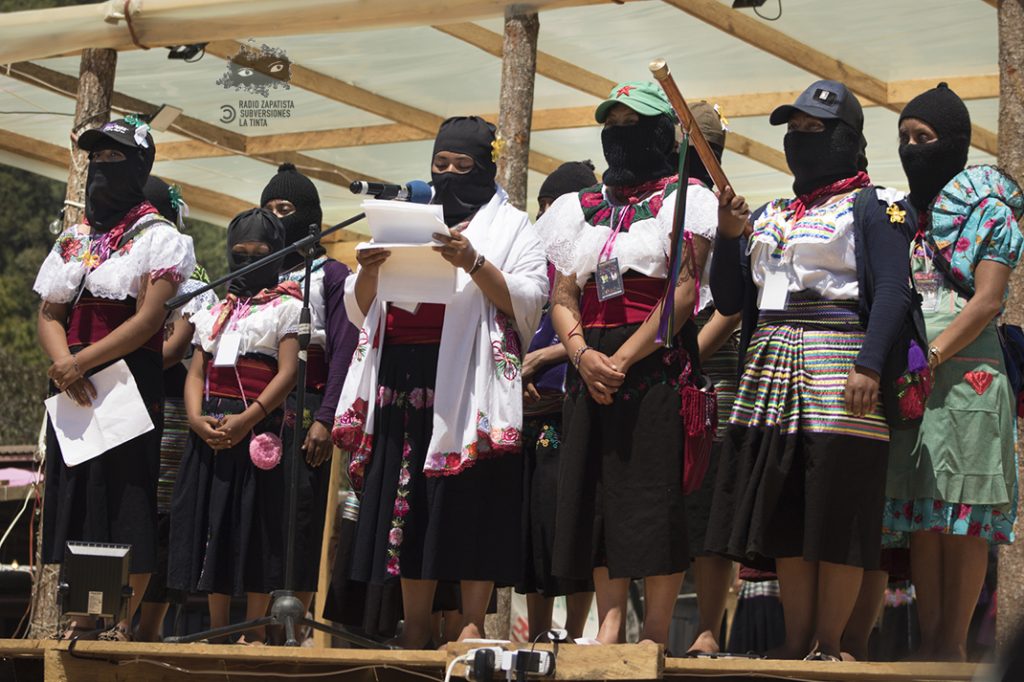
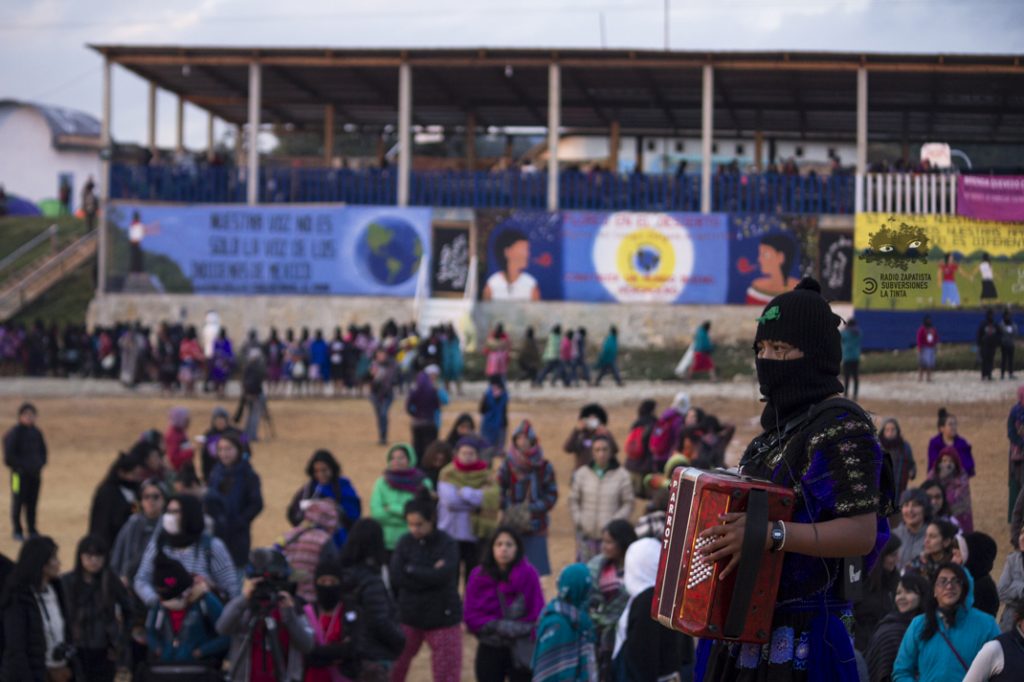
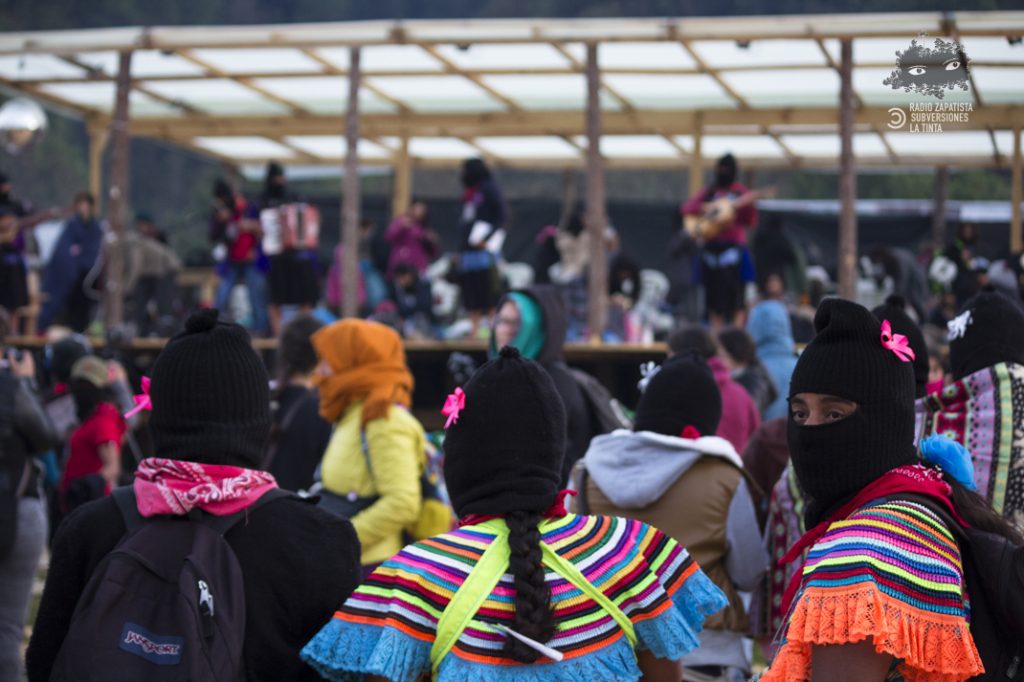
Palabras revueltas
(…) vendríamos seis mujeres zapatistas para cada una de ustedes: una pichita (que así les decimos a las que acaban de nacer), una niña, una jóvena, una adulta, una anciana y una finada. Todas mujeres, todas indígenas, todas pobres, todas zapatistas que te abracen fuerte, porque es el único regalo que podemos darte de vuelta.
(Discurso de clausura. Compañera Alejandra)
La insurgenta Érika fue quien leyó el discurso de apertura. Acompañada en el escenario por otras compañeras insurgentas, milicianas y juntas de buen gobierno, comenzó enviándole un abrazo a Eloisa Vega Castro, de las redes de apoyo al Concejo Indígena de Gobierno (CIG), quien murió cuando acompañaba a la delegación del CIG el pasado 14 de febrero.
Nos plantearon que su trabajo iba a ser el de cuidar el lugar para que no ingresaran los hombres: “porque lo sabemos, son mañosos”. Una risa cómplice (como muchas que sucederían durante todo el evento) se soltó entre todas las mujeres que estábamos allí escuchando atentamente las palabras de inauguración.
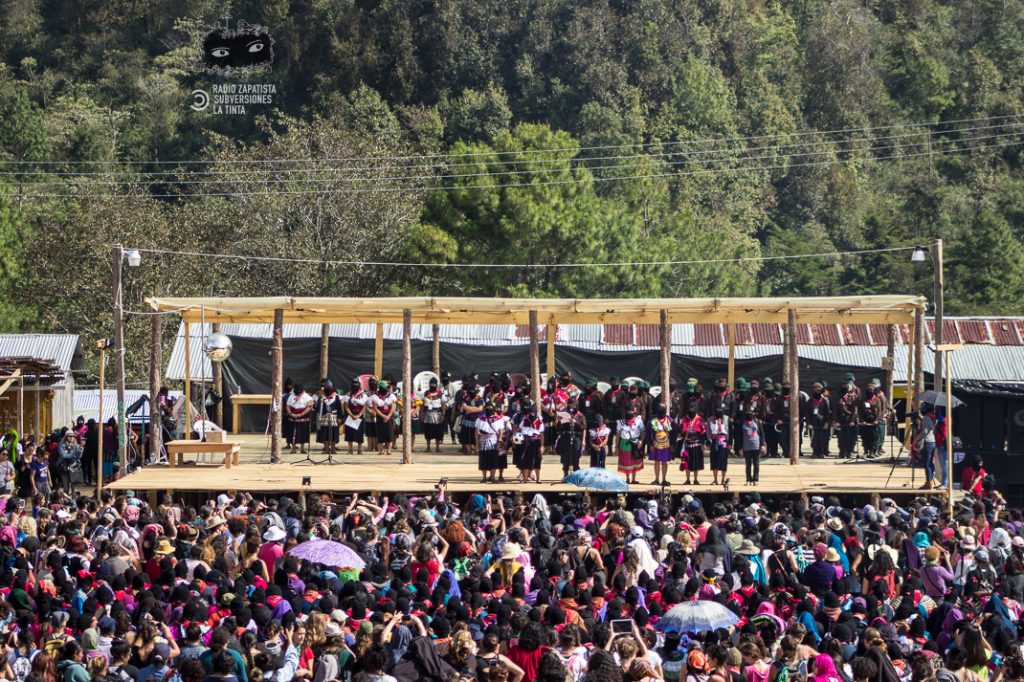
Las zapatistas no dudaron en dejarnos claro que su palabra es colectiva y que necesariamente lleva impregnada edades, historias y lenguas distintas. A través de la voz de Érika, hablaron muchas. Ella nos narró cómo su vida estuvo marcada por haber crecido en la resistencia y rebeldía zapatista de sus abuelas, sus mamás y sus hermanas mayores. Nos contó de su trabajo sin salario como sirvienta en una casa, donde no sabía hablar español; de cómo supo que había una organización que luchaba y empezó a participar como base de apoyo y a estudiar siendo parte de los trabajos colectivos junto a otras mujeres. En sus reuniones y en sus estudios políticos en la clandestinidad fue creciendo la rabia y el coraje para enfrentar a las patrullas militares que rondaban sus comunidades y, sin miedo, tomar las armas.
Las compañeras zapatistas nos recuerdan que no sólo el capitalismo es el que nos quiere destruir, sino que también tenemos que luchar contra el patriarcado, ese sistema que “les hace creer y pensar a los hombres que las mujeres somos menos y no servimos”. Pero no sólo a los hombres, nos aclaran las zapatistas, “también hay mujeres de las ciudades que nos desprecian que porque no sabemos de la lucha de mujeres, porque no hemos leído libros donde las feministas explican cómo debe ser y tantas cosas que dicen y critican sin saber cómo es nuestra lucha”.
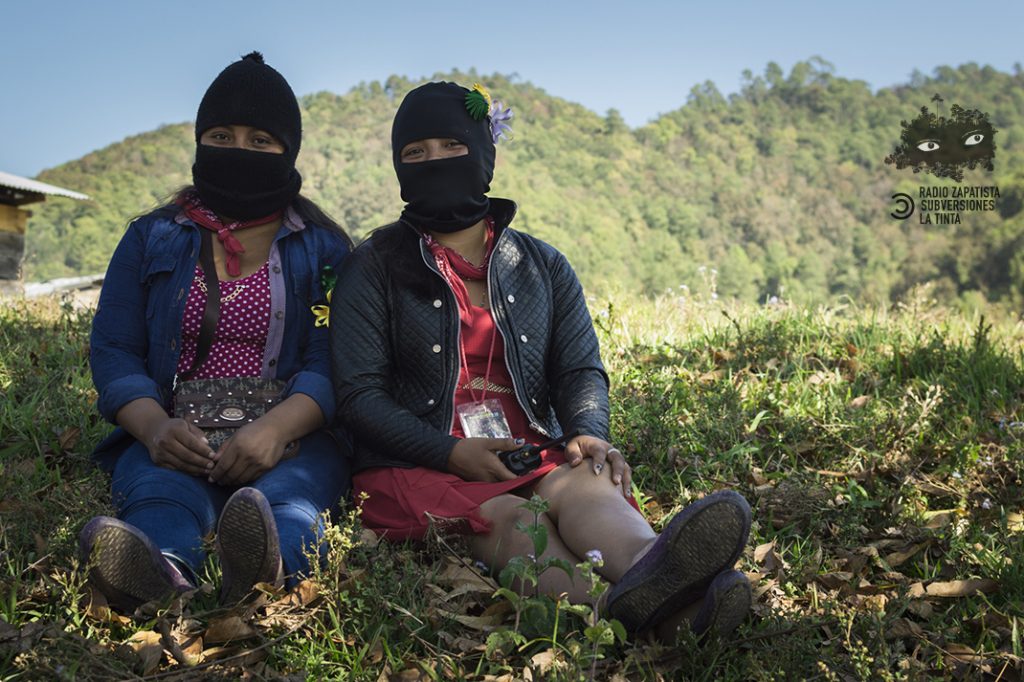
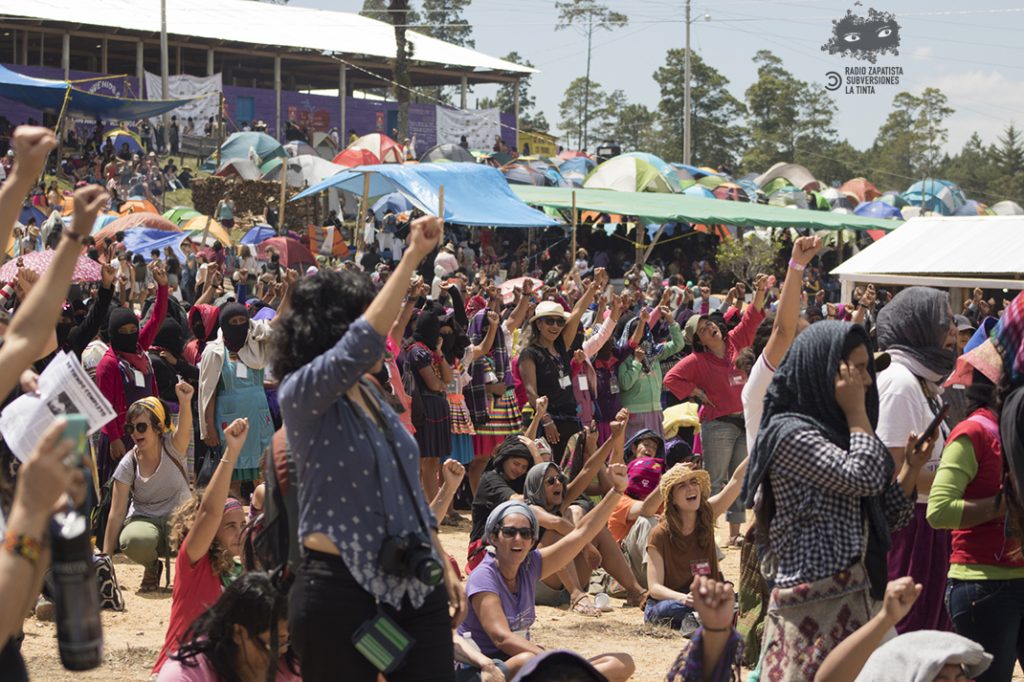
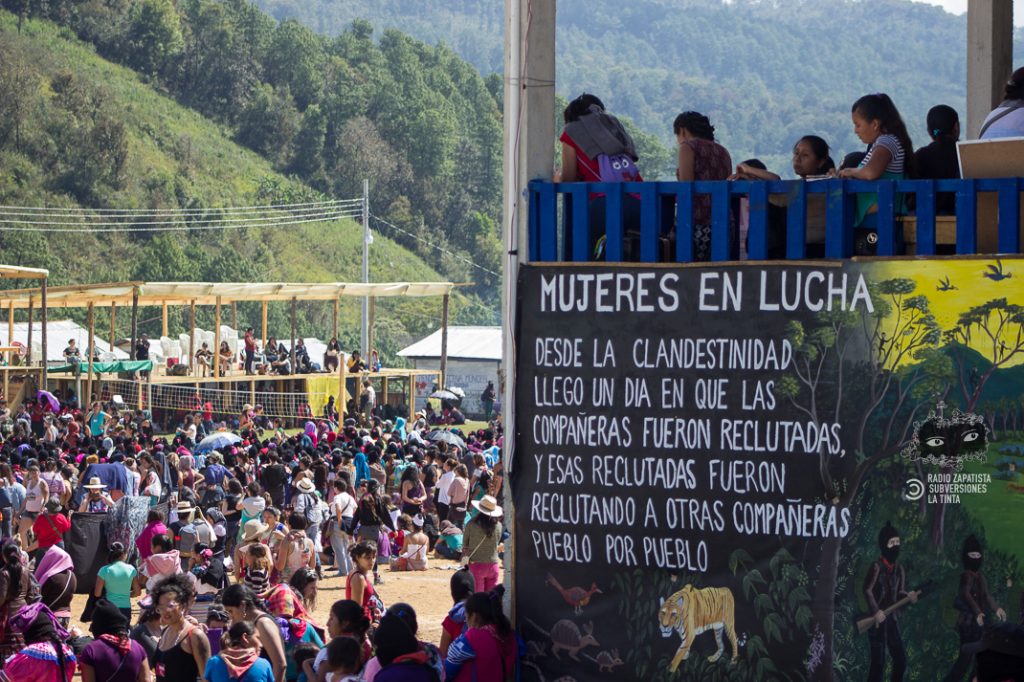
Un bosque de mujeres
Entonces pues no basta un colectivo para organizar todo eso. Por eso llegamos aquí más de dos mil mujeres zapatistas de los cinco caracoles. Y tal vez no bastó, porque ustedes son como cinco mil, aunque algunas dicen que ocho mil y otras dicen que nueve mil. A saber cuántas mujeres que luchan llegamos en estos días, pero creemos que podemos estar de acuerdo en que somos un chingo.
(Discurso de clausura. Compañera Alejandra)
Las zapatistas saben que las formas de nombrar esa cantidad de árboles que rodean el lugar donde se realizó el Encuentro son distintas, y que cada árbol que es parte de ese bosque o monte, es diferente. Como sea que le llamemos a ese conjunto de árboles, nos permite pensarnos a nosotras, las mujeres, “diferentes e iguales” a la vez. Partir de que nuestros colores, tamaños, lenguas, culturas, profesiones, oficios, pensamientos y formas de lucha, son diferentes.
En la puerta había un gran cartel que decía “Prohibido entrar hombres”. El llamado fue claro. La convocatoria era para nosotras.
Ellas nos dijeron que podíamos elegir entre competir o escuchar y hablar y que sea lo que sea que eligiéramos, iba a ser nuestra decisión. Si decidíamos competir, de cualquier manera, no habría hombres que nos dijeran “quién gana y quién pierde”. Si elegíamos regalarnos baile, música, cine, video, pintura, poesía, teatro, escultura, diversión, conocimiento, tampoco sería bajo la mirada de los hombres. La elección fue clara: acordamos no competir y respetar nuestras diversidades. Mirarnos y abrazarnos en rondas de cuerpos incontables, mientras gritábamos “¡luchar, resistir, nuestro acuerdo es vivir!”. El acuerdo por vivir, se hizo entre mujeres del campo y de la ciudad, indígenas, autoconvocadas, artistas, feministas, luchadoras provenientes de los cinco continentes.
Carolina y Marina, las coordinadoras entrevistadas nos dijeron: “Vemos que la situación que hay es que muchas mujeres están siendo asesinadas. Qué culpa tenemos nosotras como mujeres que a cada día nos anden matando. Entonces pues, por eso mejor hacemos este encuentro para ver qué podemos hacer o si estamos de acuerdo que nos sigan matando cada día o qué debemos de hacer como mujeres. Por eso es que se hizo esto para ver si queremos seguir vivas, pues hay que hacer algo”. Lo primero, en palabras de las compañeras, es “no vendernos, no rendirnos, no claudicar”.
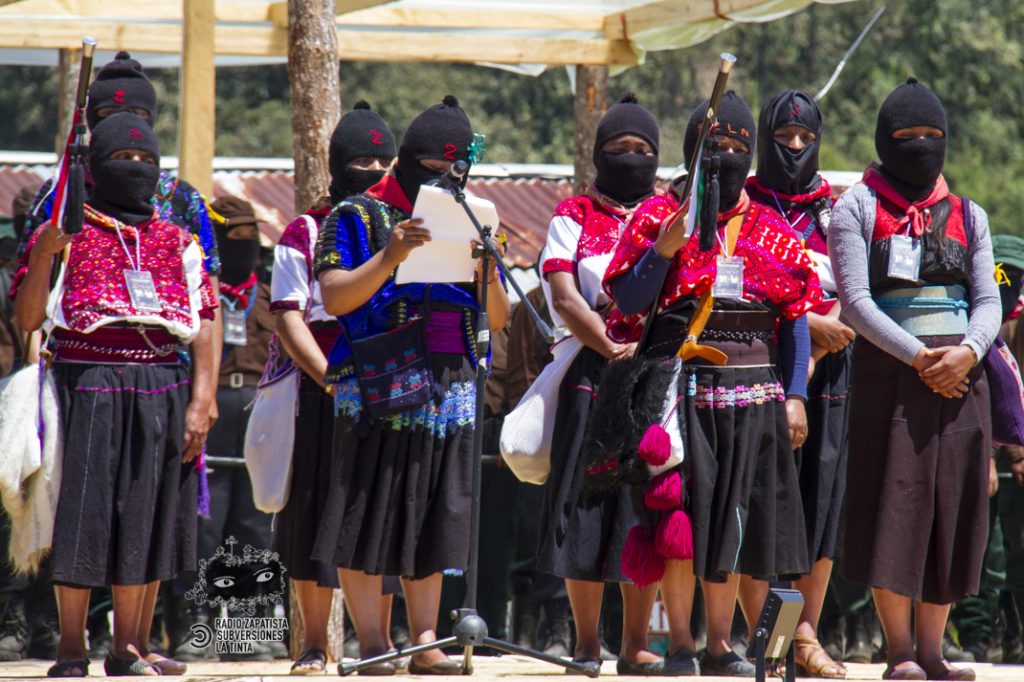
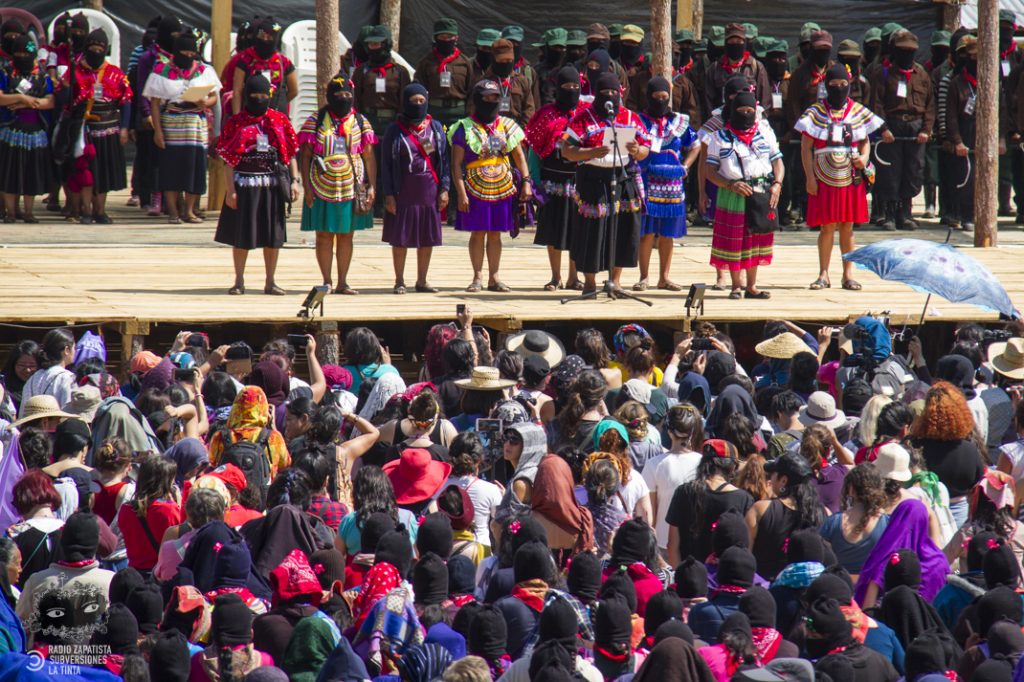
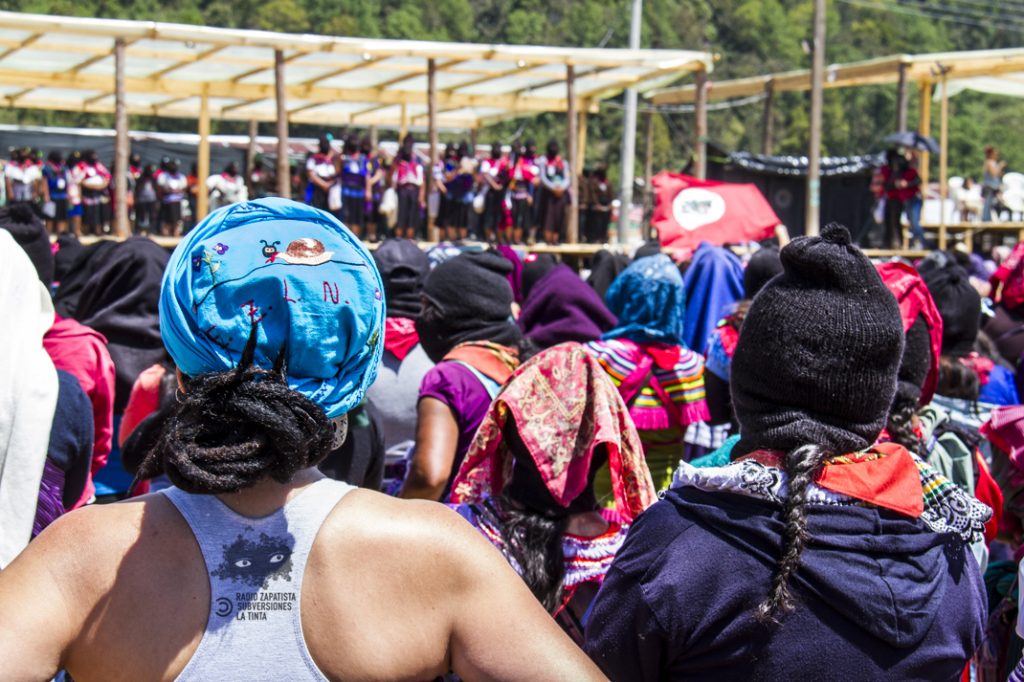
Luces encendidas en el cielo de Morelia
Llévala a las desaparecidas. Llévala a las asesinadas. Llévala a las presas. Llévala a las violadas. Llévala a las golpeadas. Llévala a las acosadas. Llévala a las violentadas de todas las formas. Llévala a las migrantes. Llévala a las explotadas. Llévala a las muertas. Llévala y dile a todas y cada una de ellas que no está sola, que vas a luchar por ella. Que vas a luchar por la verdad y la justicia que merece su dolor. Que vas a luchar porque el dolor que carga no se vuelva a repetir en otra mujer en cualquier mundo.
(Discurso de clausura. Compañera Alejandra)
La noche del 8 de marzo el Caracol quedó completamente a oscuras. En uno de los auditorios de dos pisos y a lo largo de la cancha de fútbol, las compañeras zapatistas encendieron simultáneamente más de dos mil velas. Una pequeña luz para que, finalizado el Encuentro, la llevemos a nuestras tierras. Para volver a encenderla en nuestros corazones, en nuestros pensamientos y en nuestras tripas.
Anteriormente habíamos escuchado los discursos de inauguración y la historia de las compañeras de cada Caracol, expresadas también artísticamente en obras de teatro y en las voces de las mujeres de “Dignidad y la Resistencia”, banda musical de Oventic.
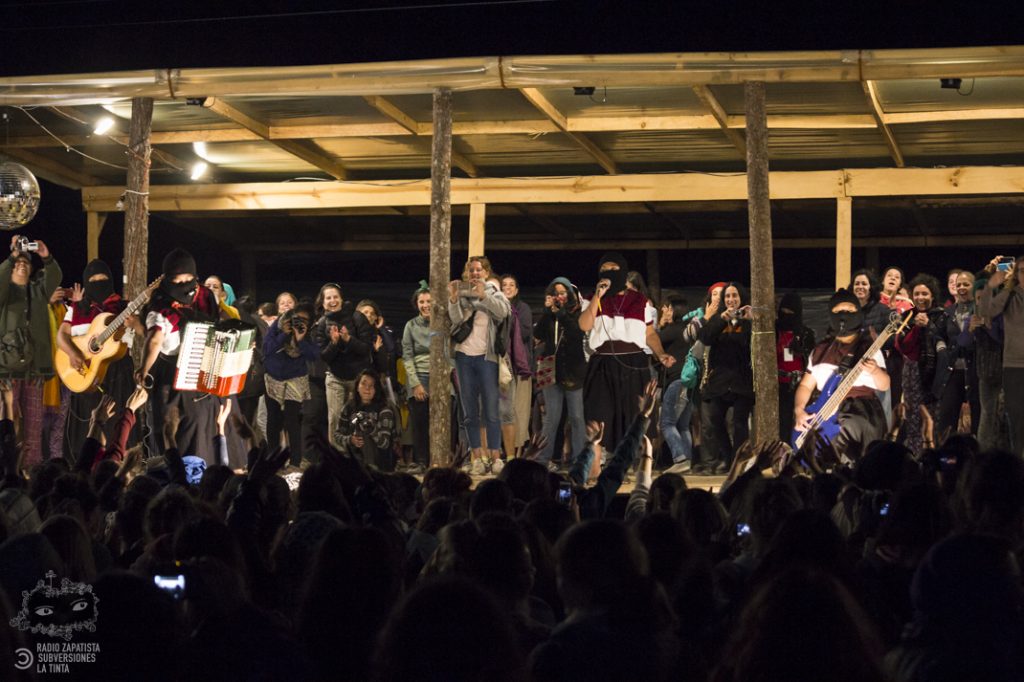
También nos hicieron varias propuestas, a todas dijimos que ¡sí! Acordamos “seguir vivas y seguir luchando, cada quien según su modo, su tiempo y su mundo”. Acordamos estudiar, analizar, discutir en nuestros colectivos el sistema patriarcal, para, si se puede, “nombrar quién o quiénes son los responsables de nuestros dolores que tenemos”. Y acordamos también, volver a reunirnos en un segundo encuentro el próximo año “pero no nada más aquí en tierras zapatistas, sino que también en sus mundos de cada quien, de acuerdo a sus tiempos y modos”.
Queda la urgencia de iluminarnos entre nosotras, compartir esas luces y llevarlas a otras mujeres: “llévala y, tal vez, luego llegue en tu pensamiento que no habrá ni verdad, ni justicia, ni libertad en el sistema capitalista patriarcal. Entonces tal vez nos vamos a volver a ver para prenderle fuego al sistema. Y tal vez vas a estar junto a nosotras cuidando que nadie apague ese fuego hasta que no queden más que cenizas”. Mientras eso ocurre, mientras “ese día que será de noche” llegue, seguiremos practicando, entrenando para estar sabedoras de lo más importante que se necesita. “Y eso que se necesita es que nunca más ninguna mujer, del mundo que sea, del color que sea, del tamaño que sea, de la edad que sea, de la lengua que sea, de la cultura que sea, tenga miedo. Porque acá sabemos bien que cuando se dice ‘¡Ya basta!’ es que apenas empieza el camino y que siempre falta lo que falta”.
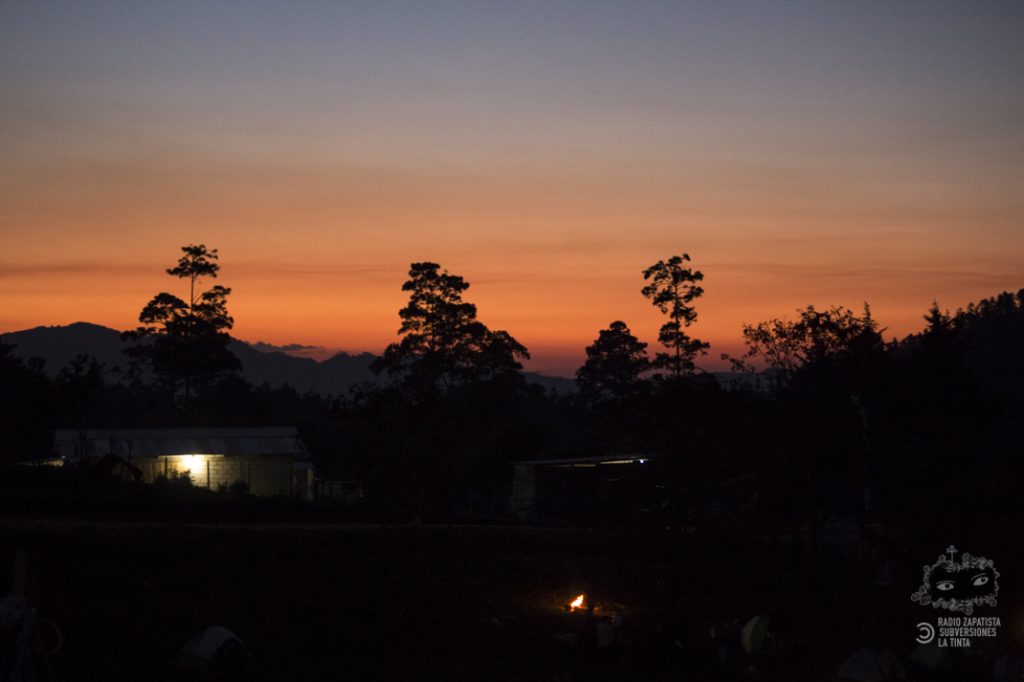
Escucha y descarga las palabras de inauguración y clausura del Encuentro:
(Para descargar, haz clic con el botón derecho sobre el título del audio.)


